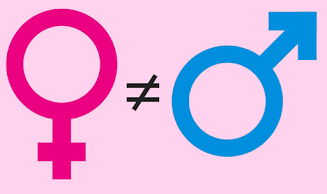WHAT IS GENDER DESCRIMINATION?
FIELDS WHERE GENDER DISCRIMINATION EXIST
ECONOMIC FRONT
GENDER DISCRIMINATION IN EDUCATION
GENDER DISCRIMINATION IN EMPLOYMENT
POLITICS
“Women continue to remain in the shadows of men in Indian politics.”
Gender inequality is very well observed in the political engagement of women in India. The participation of women in Indian politics is not very magnificent. Women politicians are comparatively less in India. During the Parliamentary general elections of 2014, women turnout was 65.63% as compared to 67.09% turnout of men.
CAUSES OF GENDER DISCRIMINATION IN INDIA
Even though the Constitution of India protects and provides equal rights to men and women and provides equal measures to enhance the position of women in society, yet there are many women who are not able to enjoy the rights which are pledged to them. The major causes of gender discrimination are:
1. ILLITERACY
There are roughly 960 million uneducated adults; out of which 2/3 are women. Lack of education of the girls has been a major cause of gender discrimination. The female literacy rate differs from 35% in Bihar to 88% in Kerala. States like Rajasthan, Assam, Bihar, the female literacy rate is below than 50%. Growth towards the education by the girls is very sedate. The participation of girls in education is below 50%. It contributes to poor health conditions, lower living status, increase in number of crimes.
2. POVERTY
Poverty is the principal- cause of gender inequality in the male dominated Indian society. In most of the families, males are the sole bread earners of the family, which increases the financial dependency on the male counterpart of the family; which down the line is the cause of gender inequality.
3. SOCIETAL NORMS, RULES AND CUSTOMS
Women are trapped in the societal norms, its rules and customs. The orthodox traditional patriarchal family system has always constricted the role of women mostly to the domestic world. Men are given the responsibility to provide and safeguard the family while women are recognized to take care of the family and its need. In Indian society, from ages men have dominated women who lead to their lower status in the family and in the society.
Liking for a boy child and the disliking for a girl child can been seen in many parts of India. Sons are considered to be profit- making, economic and ceremonial asset whereas daughters are contemplated to be a burden, a kind of liability on the family. This conservative thinking of the society is still prevalent in this modern era, leading to ‘testing the gender of the fetuses’ and termination of pregnancy in an illegal way. Mindset like, teaching the kitchen work to the girl child is more important as compared to sending her to the school is horrible; but unfortunately it still persist in our society. Many families feel that sending a girl child to the school is a redundant economic burden as later on in life she will be married and will be given to another family. This pessimistic thinking of parents and society is the cause of gender disparity in India.
4. LACK OF AWARENESS
Lack of awareness among the genders, especially women; for their rights and opportunities is still there in India. Because of their unawareness women accept to tolerate the violence and trauma of the family.
SCHEMES LAUNCHED BY THE GOVERNMENT
Schemes such as:
· “Beti Bachao, Beti Padhao”
· “Kasturba Gandhi Balika Vidyalaya”
· “Mother and Child Tracking System”
· “The Indira Gandhi Matritva Sahyog Yojana”
Were launched to reduce gender inequality in India. Many associations and organizations are working to reduce this menace. These associations include: “All India Democratic Women’s Association”, “National Commission for Women”, “Ministry of Women and Child Development”.
CONCLUSION


